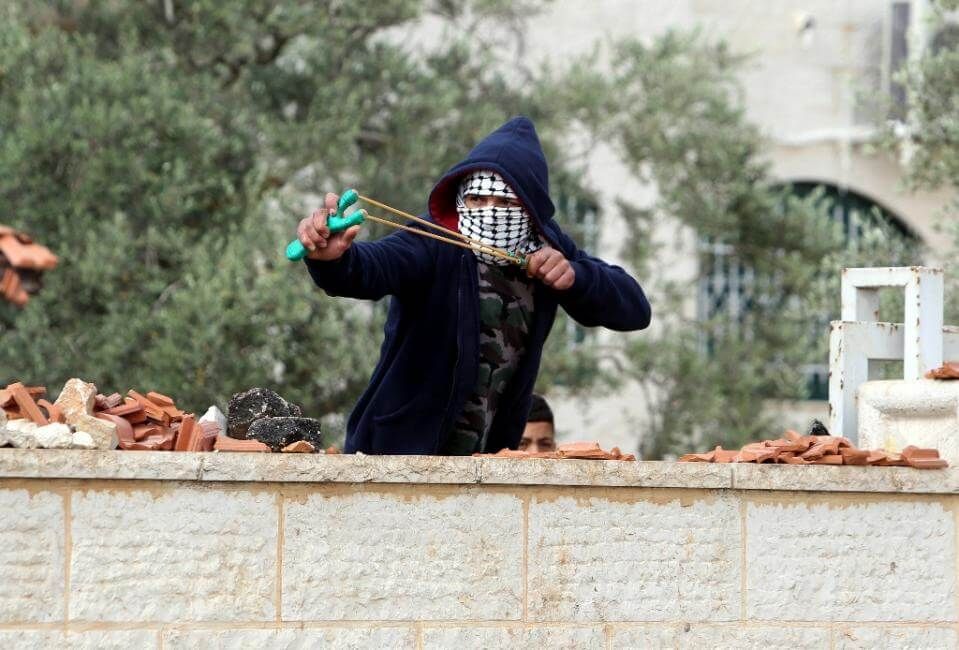It’s tough to decide which is more misleading: The AFP headline or the picture under it.
On June 14, in the village of Kfar Malik, the Israeli Army says a Palestinian man threw a bottle filled with flaming gasoline at Israeli soldiers in a jeep, causing the driver to lose control and crash into him. The man was killed and the soldiers in the jeep were injured.
The AFP decided that the most accurate way to summarize the incident in a headline was this way:
 Missing is any indication that the man was attacking the soldiers. In fact, from the headline, it would be reasonable to conclude that the soldiers were the aggressors.
Missing is any indication that the man was attacking the soldiers. In fact, from the headline, it would be reasonable to conclude that the soldiers were the aggressors.
Yet as bad as the headline is, the main picture that the AFP chose to run to illustrate the story is far worse. Apparently they could not find images of a Palestinian throwing a firebomb. So instead they picked a file photo of a Palestinian with a slingshot. Not only is the picture of a different man with a different weapon, it was taken in a different location on a different date than the incident being reported.
Taken together, the headline and picture present an image of, at the very least, a disproportionate response by the Israeli Army.
Headlines and pictures are not simply accessories to an article. They are critical components and in many cases are the only parts that a reader will see. Taken together, a headline and a picture carry far more weight than anything written below them.
Featured image: Designed by Freepik with modifications by HonestReporting


